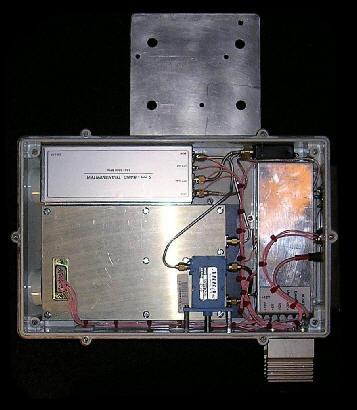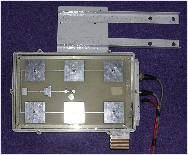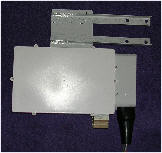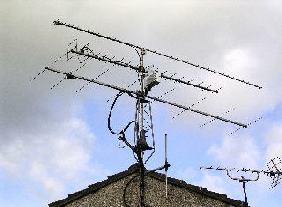First forays onto 9cm
3 minute read
A compact 9cm transverter
September 2006
I was given an Ionica 15W 9cm PA some time ago. However, I had always considered 9cm a band where nothing short of a dish would suffice for an antenna and since I prefer to operate from home I had never considered operating higher than 2.3GHz. That was until I was handed a redundant Ionica ‘Domestic Unit’ ... The little brown box that was often bolted to the house. This gave me an idea. Not that the electronics were of much use ... but the 6-patch planar array got me thinking ... Could I build a complete transverter, using my 15W PA into this little box and mount it on my mast and use the internal planar array rather than a dish?

The answer was off course, yes! Initial ideas of building the actual transverter from scratch were quickly dismissed when it became apparent that DB6NT’s MK2 9cm transverter kit was affordable. If there is one disadvantage with the Ionica 15W PA, it has to be the power supply requirement . . . requiring +12V, -12V, +5V and +10V. Then add to that, +28V for the aerial change-over relay. Inspired by G3PHO’s 9cm transverter, the tin-plate box on the right provides all these voltages and also contains the DB6NT ‘style’ sequencer. All switching is effected by high current MOSFETs to minimise IR losses, and everything is mounted on a single PCB with the 10V regulator being mounted on the outside of the case. I used a TO-3 can device with an isolated can . . . A case of using what was at hand!
Obviously the case was not intended to house the PA, so a fair bit of plastic was cut away to make way for the hefty heat-sink with almost half of the back of the box being cut out. The heavy aluminium mounting plate also helps to support the heat-sink. The output of the DB6NT transverter is in excess of 200mW, much greater than the 0.8mW normally required to drive the PA to 15W, hence the ARRA attenuator. This is a 30dB unit which although only specified for 2-2.4GHz, tests showed it worked just fine at 3.4GHz.
Obviously the case was not intended to house the PA, so a fair bit of plastic was cut away to make way for the hefty heat-sink with almost half of the back of the box being cut out. The heavy aluminium mounting plate also helps to support the heat-sink. The output of the DB6NT transverter is in excess of 200mW, much greater than the 0.8mW normally required to drive the PA to 15W, hence the ARRA attenuator. This is a 30dB unit which although only specified for 2-2.4GHz, tests showed it worked just fine at 3.4GHz.



So it is mounted on the smaller mast on the end of the house instead. A major benefit of this is the smaller cable run resulting in much less IR drop in the power line.
Does it work? Off course it works! We just need some propagation over the North Sea now!
Click the play button below to hear what it sounds like on air.
Click the play button below to hear what it sounds like on air.